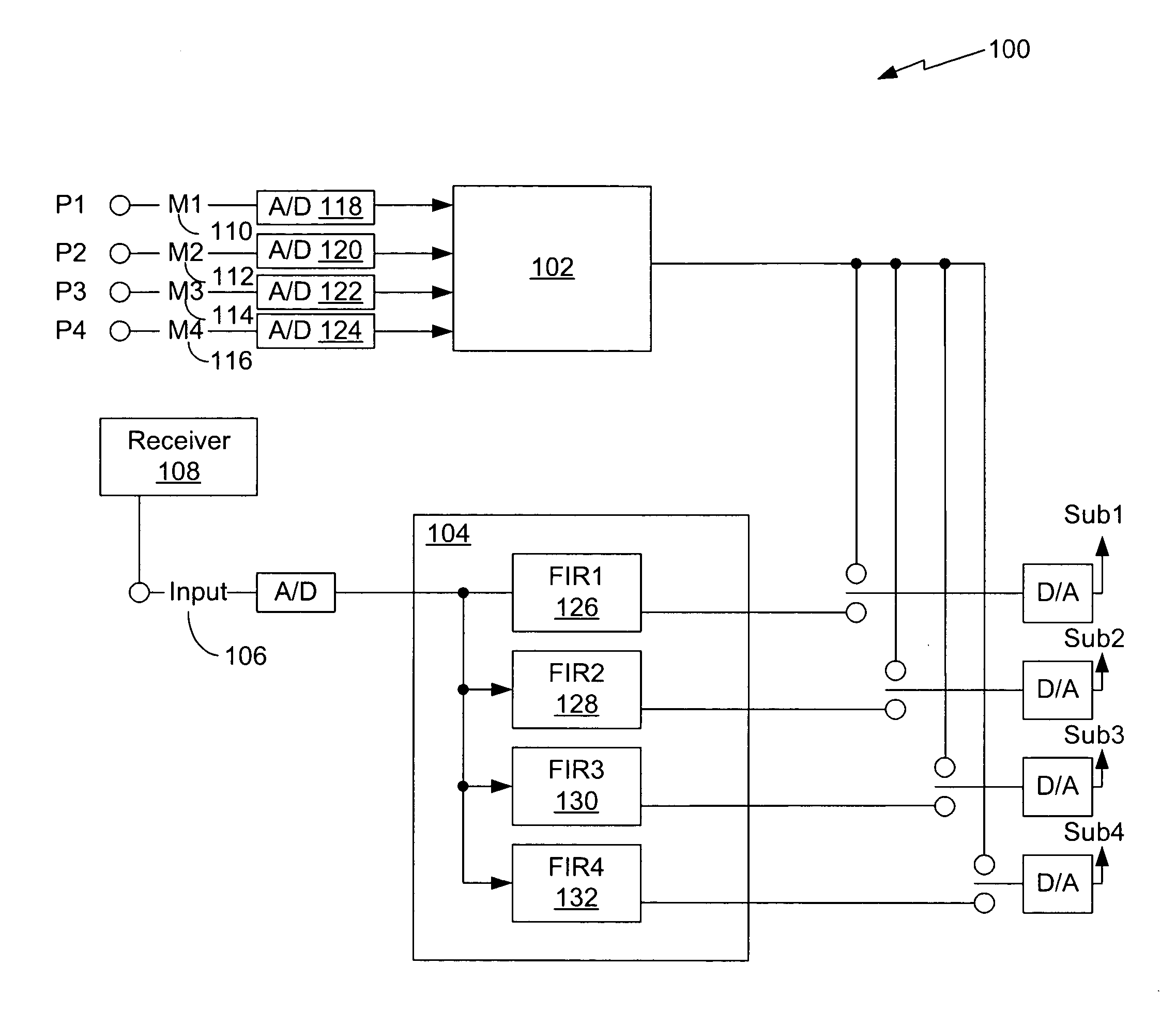Reduced latency low frequency equalization system
a low-frequency equalization and low-frequency technology, applied in the direction of electrical transducers, digital signal tone/bandwidth control, transducer details, etc., can solve the problems of affecting the low-frequency performance of the sound system, affecting the bass response of some listening positions, and affecting certain locations negatively, so as to reduce the latency low-frequency equalization system and improve the bass response
- Summary
- Abstract
- Description
- Claims
- Application Information
AI Technical Summary
Benefits of technology
Problems solved by technology
Method used
Image
Examples
Embodiment Construction
[0047]FIG. 1 is a block diagram of one example of one implementation of an equalization system 100. The equalization system 100 is able to improve bass response from one or more subwoofers positioned within a room such that the bass response within a desired listening area of the room is relatively flat across a predetermined low-frequency range. The equalization system 100 may be used to equalize frequency responses from in a variety of rooms having unique characteristics.
[0048]FIG. 2 illustrates one example of a listening environment in which the equalization system 100 of FIG. 1 may be employed. While the equalization system 100 may be used to equalize bass response in a variety of rooms of various types, sizes and shapes, for purposes of illustration, the equalization system 100 may be utilized in a rectangular room 200 having four walls 202, a floor 204 and a ceiling (not shown). Subwoofers Sub1, Sub2, Sub2, and Sub4 may be positioned such that one subwoofer is in each corner ...
PUM
 Login to View More
Login to View More Abstract
Description
Claims
Application Information
 Login to View More
Login to View More - R&D
- Intellectual Property
- Life Sciences
- Materials
- Tech Scout
- Unparalleled Data Quality
- Higher Quality Content
- 60% Fewer Hallucinations
Browse by: Latest US Patents, China's latest patents, Technical Efficacy Thesaurus, Application Domain, Technology Topic, Popular Technical Reports.
© 2025 PatSnap. All rights reserved.Legal|Privacy policy|Modern Slavery Act Transparency Statement|Sitemap|About US| Contact US: help@patsnap.com



